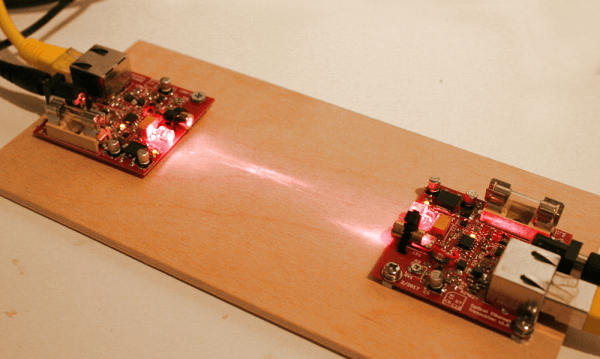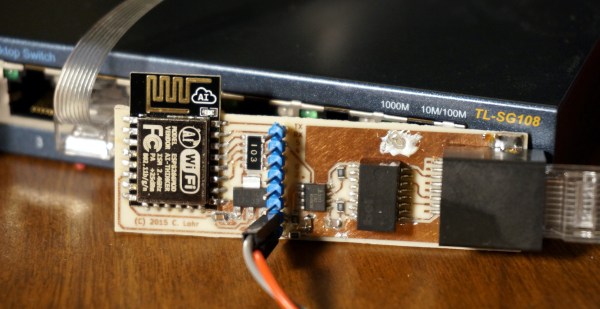Most of us have Ethernet in our homes today. The real backbones of the Internet though, use no wires at all. Optical fibers carry pulses of light across the land, under the sea, and if you’re lucky, right to your door. [Sven Brauch] decided to create an optical link. He didn’t have any fiber handy, but air will carry laser pulses over short distances quite nicely. The idea of this project is to directly convert ethernet signals to light pulses. For simplicity’s sake, [Sven] limited the bandwidth to one channel, full-duplex, at 10 Megabits per second (Mbps).
The transmit side of the circuit is rather simple. An op-amp circuit acts as a constant current source, biasing the laser diode. The transmit signal from an Ethernet cable is then added in as modulation. This ensures the laser glows brightly for a 1 bit but never shuts completely off for a 0 bit.
The receive side of the circuit starts with a photodiode. The diode is biased up around 35 V, and a transimpedance amplifier (a current to voltage converter) is used to determine if the diode is seeing a 1 or a 0 from the laser. A bit more signal conditioning ensures the output will be a proper differential Ethernet signal.
[Sven] built two identical boards – each with a transmitter and receiver. He tested the circuit by pointing it at a mirror. His Linux box immediately established a link and was reported that there was a duplicate IP address on the network. This was exactly what [Sven] expected. The computer was confused by its own reflection – but the laser and photodiode circuits were working.
Finally, [Sven] connected his PC and a Raspberry Pi to the two circuits. After carefully aligning the lasers on a wooden board, the two machines established a link. Success! (But be aware that a longer distances, more sophisticated alignment mechanisms may be in order.)
Want to know more about fiber and networking? Check out this article about wiring up an older city. You can also use an optical link to control your CNC.


















